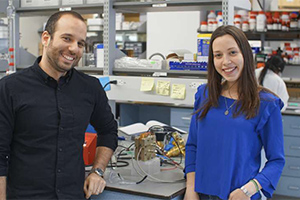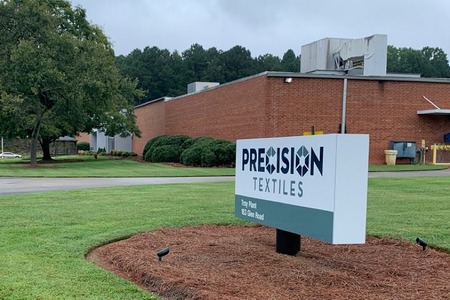
AI make nylon production more sustainable
YarnsandFibers News Bureau 2019-08-29 10:30:00 –A new method could make producing the precursor to nylon much more environmentally friendly, researchers report.
The chemical and allied industries face challenges such as ready access to reliable energy supplies, waste reduction, water conservation, and energy efficiency. Organic electrosynthesis—an electricity-driven, energy-efficient process that can easily integrate with renewable energy sources—could help solve them.
In its search to develop an innovative, environmentally friendly process to make adiponitrile (ADN)—the main precursor to nylon 6,6—researchers found a way to greatly improve the efficiency of organic electrosynthesis.
The researchers credited their success in part to what they believe is the first use of artificial intelligence to optimize an electrochemical process.
Miguel Modestino, a professor of chemical and biomolecular engineering at New York Universtiy, and doctoral student Daniela Blanco tweaked how electrical current is delivered to catalytic electrodes and then applied artificial intelligence (AI) to further optimize the reaction. By doing so they achieved a 30% improvement in ADN production
The findings in the Proceedings of the National Academy of Sciences could have major implications since the team targets one of the largest organic electrosynthesis processes in the chemical industry: the electrohydrodimerization of acrylonitrile (AN) to ADN.
Electrosynthesis of ADN is a green, efficient, chemical process that uses water-based electrolytes.
Demand for ADN is high and growing: The market for nylon is expected to increase 4% annually through 2023. Only one company currently uses a Monsanto-invented electrochemical process to make ADN; the lion’s share of the nylon precursor is made via a toxic, energy intensive thermal hydrocyanation of butadiene.
By contrast, electrosynthesis of ADN is a green, efficient, chemical process that uses water-based electrolytes and can be directly coupled with renewable electricity sources such as wind or sunlight.
The standard electrosynthetic process for ADN employs an “always on” direct electrical current delivered to the electrocatalytic site. But the researchers found that a direct current did not maximize output of ADN and generated a great deal of the unwanted byproduct propionitrile (PN). They decided to engineer a system that delivers an intermittent current to constantly replenish reagent concentration at the electrocatalytic site (a phenomenon called mass transport) and improve ADN output.
The pair supplied an artificial neural network with data from 16 different experimental cases of pulse times.
“By analyzing electrochemical pulse techniques with AI, we were able to visualize ADN conversion efficiency across a range of pulse times without having to do more than a few physical experiments,” says Modestino. “This innovative, integrated approach led to an unprecedented 30% improvement in ADN production and a 325% increase in the ratio of ADN to PN, mostly due a large decrease in production of the latter.”
“To the best of our knowledge, this is the first time AI has been used to optimize an electrochemical process.”
Blanco explains that this technique could advance industry adoption of more sustainable processes. That is exactly what she and a former student in Modestino’s laboratory envisioned when they founded a green-chemistry startup company, Sunthetics, to commercialize a sustainable nylon production process based on their research.
“We wanted to show with this new research that we can make the ADN electrochemical process more competitive,” she says. “Currently only 30% of global ADN output employs electrosynthesis; the rest of production involves processing over an energy- and oil-intensive catalytic reactor,” she says.
The next step for the team will be to use this AI approach to accelerate their research endeavors. “Instead of using a classical research model involving lengthy experimental campaigns, AI tools can help us predict experimental outcomes. To the best of our knowledge, this is the first time AI has been used to optimize an electrochemical process,” Modestino says.
This research is funded in part by the H&M Foundation.
Courtesy: Futurity
Market Intelligence
Ask for free sample Report

experience
Customer Base
dedicated team
Countries Served Worldwide









